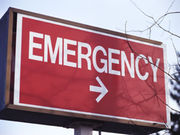Anticoagulants, antibiotics, diabetes agents implicated in estimated 46.9 percent of ER visits
TUESDAY, Nov. 22, 2016 (HealthDay News) — In 2013 to 2014, the estimated prevalence of emergency department visits for adverse drug events was four per 1,000 individuals, according to research published in the Nov. 22 issue of the Journal of the American Medical Association.
Nadine Shehab, Pharm.D., M.P.H., from the U.S. Centers for Disease Control and Prevention in Atlanta, and colleagues describe the characteristics of emergency department visits for adverse drug events in the United States in 2013 to 2014. Data were included for 42,585 cases from 58 emergency departments.
The researchers found that there were an estimated 4.0 emergency department visits for adverse drug events per 1,000 individuals annually in 2013 and 2014; 27.3 percent of adverse drug event-related emergency department visits resulted in hospitalization. Individuals aged 65 years and older accounted for an estimated 34.5 percent of emergency department visits for adverse drug events in 2013 to 2014, compared with an estimated 25.6 percent in 2005 to 2006; older adults experienced the highest hospitalization rates (43.6 percent). In an estimated 46.9 percent of emergency department visits for adverse drug events, anticoagulants, antibiotics, and diabetes agents were implicated; the proportion of emergency department visits for adverse drug events from anticoagulants and diabetes agents increased, while the proportion from antibiotics decreased, since 2005 to 2006.
“Adverse drug events from anticoagulants, antibiotics, diabetes agents, opioid analgesics, and antipsychotics are a common reason for emergency department visits and may benefit from patient safety initiatives,” the authors write.
Full Text (subscription or payment may be required)
Editorial (subscription or payment may be required)
Copyright © 2016 HealthDay. All rights reserved.








